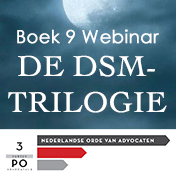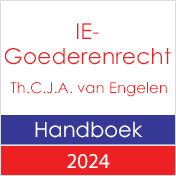EFTA-adviesaanvraag over delen van marktgevoelige informatie met concurrentie
17-10-2023 Print this page
The applicant, Låssenteret, is engaged in the sale, installation and maintenance of locks and security systems. The respondent, AAOS, produces and sells products and services in the access control field for individuals and professional operators. In the period 2017 to 2019, Låssenteret had different agreements with AAOS. In 2019, AAOS terminated the one of the agreements with Låssenteret. At the end of September 2020, AAOS terminated the other agreements with Låssenteret. Låssenteret disputes the lawfulness of those terminations. In the main proceedings, Låssenteret has claimed that AAOS has a dominant position in the market and that the abuse may affect the installation market. Låssenteret also claims that AAOS has abused its dominant position by terminating Låssenteret’s agreements on insufficient grounds. Låssenteret further submits that AAOS among other things has shared market-sensitive and confidential information with its competitors. AAOS contends that it does not have a dominant position in any market and that there is nothing to substantiate one of the claims brought by Låssenteret of being foreclosed from the market. The questions referred to the EFTA Court relate to the access of evidence, namely trade secrets.
Request for an advisory opinion (E-11/23 Lassenteret AS v Assa Abloy Opening Solutions Norway):
Question 1: Is the material scope (ratione materiae) of Directive 2016/943 limited to cases in which the subject-matter of the dispute is the use of acquired trade secrets?
Question 2: The last sentence of Article 9(2) of the Directive on the protection of trade secrets requires that “[t]he number of persons referred to in points (a) and (b) of the second subparagraph shall be no greater than necessary in order to ensure compliance with the right of the parties to the legal proceedings to an effective remedy and to a fair trial, and shall include, at least, one natural person from each party and the respective lawyers or other representatives of those parties to the legal proceedings”. Despite that wording, does the Directive [on the protection of trade secrets] allow for a national court to establish a confidentiality ring which does not allow for at least one natural person from each of the parties to the case to be granted access to evidence constituting trade secrets which is submitted as evidence in the case?
Question 3: Does the last sentence of Article 9(2) of the Directive on the protection of trade secrets express a general EEA law principle to the effect that a national court may not establish a confidentiality ring which does not allow for at least one natural person from each of the parties to the case to be granted access to evidence constituting trade secrets which is submitted as evidence in the case?
Question 4: Is it of significance to the answer to one or more of questions 1 to 3 above that the trade secrets that are requested disclosed as evidence are competitively sensitive in relation to the party requesting access to the information?
Question 5: In a case involving abuse of a dominant position under Article 54 of the EEA Agreement, does EEA law, including the principle of effectiveness or the principle of homogeneity, require a national court to order the party alleged to have abused its dominant position to disclose evidence constituting trade secrets, without that court having to weigh up the parties’ interests?
Question 6: Do EEA law principles, including the principle of effectiveness or the principle of homogeneity, mean that national procedural law must be interpreted in accordance with Article 5 of the Damages Directive (Directive 2014/104/EU), even though it is not incorporated into the EEA Agreement?


























































